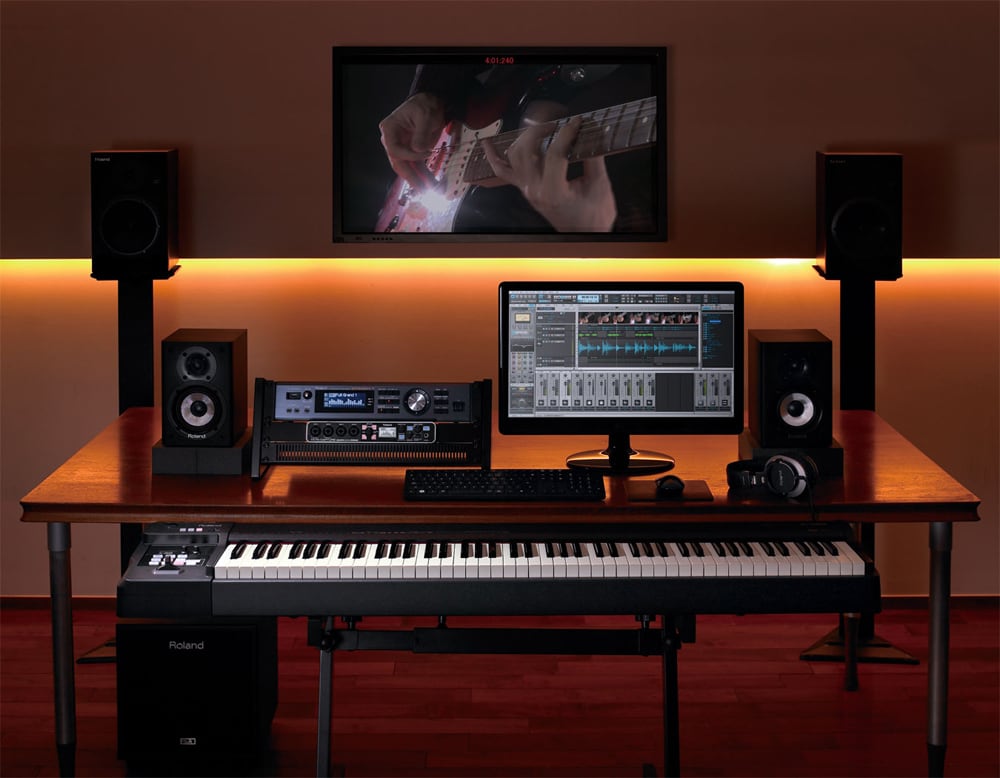Roland OCTA-Capture
Combining ten inputs, ten outputs, and eight VS PREAMPS with transparent 24-bit/192 kHz audio quality, the Roland OCTA-CAPTURE sets a new standard for portable USB 2.0 audio interfaces. High-level audio production comes easy with this fusion of premium components, Roland-quality engineering, and proprietary preamp and streaming technology. OCTA-CAPTURE is not only the perfect interface for multi-channel computer-based production, but also a great solution for expanding the I/O capability of the V-STUDIO 700 and V-STUDIO 100. Brimming with quality and performance seldom seen in its price range, OCTA-CAPTURE is the next-generation audio interface.
OCTA-CAPTURE boasts eight premium-grade digitally controlled mic preamps (VS PREAMPS), built with the same high-grade components as the preamps in the V-STUDIO 700 and M-400 V-Mixer. Eight XLR inputs are provided for the preamps, plus independent phantom power, low-cut filter, phase invert, and digital compression for each channel.
OCTA-CAPTURE boasts eight premium-grade digitally controlled mic preamps (VS PREAMPS), built with the same high-grade components as the preamps in the V-STUDIO 700 and M-400 V-Mixer. Eight XLR inputs are provided for the preamps, plus independent phantom power, low-cut filter, phase invert, and digital compression for each channel.
Offering incredible stability and industry-leading low-latency USB performance via Roland’s proprietary VS STREAMING technology. All current Mac and PC DAW platforms are supported through ASIO 2.0/WDM (Windows) and Core Audio (Mac) drivers. Thanks to VS STREAMING, you can use multiple devices (two OCTA-CAPTURE units or one OCTA-CAPTURE plus a V-STUDIO 100 or V-STUDIO 700) on the same USB bus without compromising stability, performance, or audio quality.
Beyond traditional audio interfacing, OCTA-CAPTURE offers four independent Direct Mixers for creating software-controlled monitor mixes. Each mix can be routed to any of the analog outputs and can take advantage of the internal 40-bit DSP processing — perfect for sending custom monitor mixes to headphones, speakers, or recording devices.









